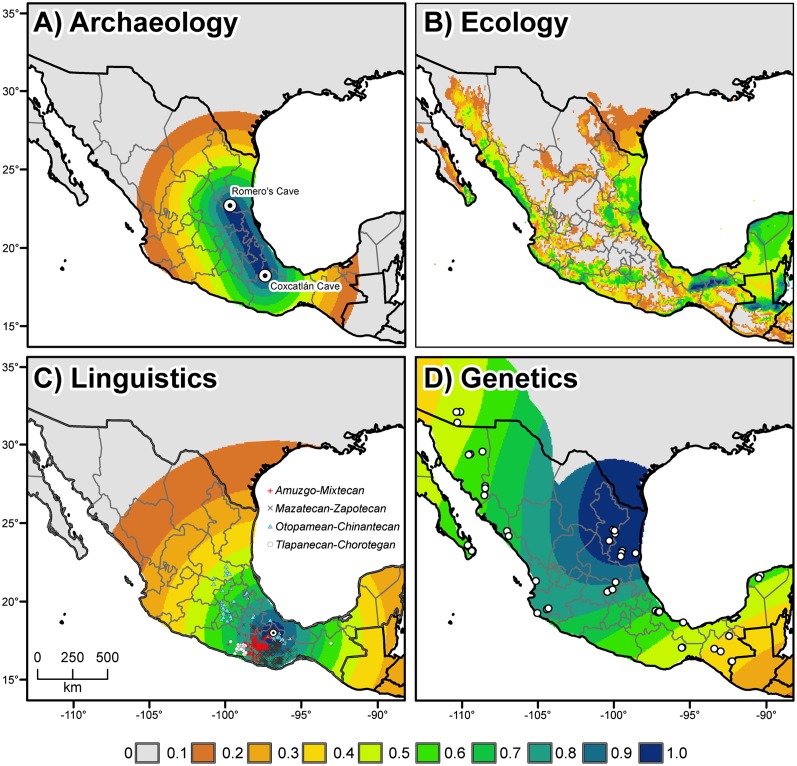Fig. 1.
Possible area of Mexico for Capsicum annuum domestication based on (A) archaeological, (B) paleoclimatic, mid-Holocene, (C) linguistic, and (D) genetic data. In addition to the strength of evidence (between 0 and 1), the maps show: (A) Location of the oldest archaeological remains of chili: Romero Cave, Ocampo, Tamaulipas; Coxcatlán Cave, Tehuacán Valley, Puebla. (C) Location of the homeland of Proto-Otomanguean (dotted circle) and of the four subgroups of current Otomanguean languages (see Fig. S5 legend and Table 1; for a more detailed view of the subgroup distribution, see Fig. S5). Open circles represent approximate locations of protolanguages with a reconstructed word for chili. (D) Open circles indicate the location of the wild chili samples used in the genetic distance analysis (29). For explanation of values, see Materials and Methods.

